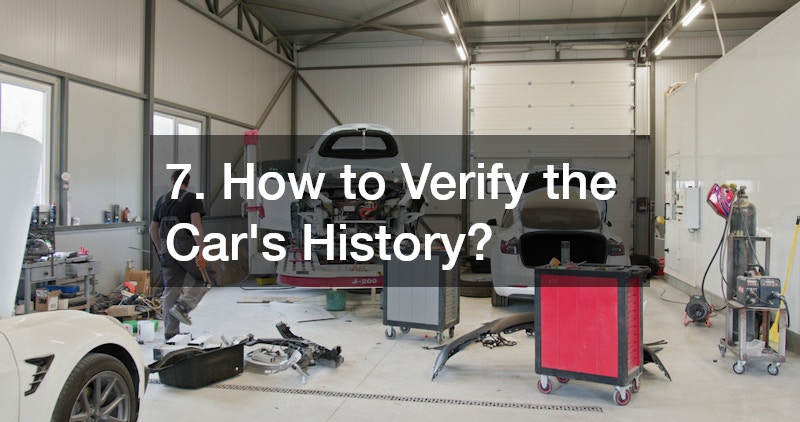For students, owning a car is often a vital tool for independence, convenience, and time management. College life can be hectic, with students balancing classes, part-time jobs, extracurricular activities, and social commitments. Having access to a reliable vehicle can make commuting easier, reduce stress, and provide opportunities for part-time work or internships off-campus. However, buying a brand-new car is often beyond the budget of most students. This makes used cars for students an attractive alternative, offering affordability while still providing the mobility that students need.
While the cost benefits are clear, purchasing used cars for students comes with its own set of challenges. Safety, reliability, and overall condition must be carefully considered to avoid costly repairs, accidents, or long-term financial burdens. Students, often inexperienced in vehicle assessment, can inadvertently purchase cars with hidden mechanical problems, compromised safety features, or legal complications. Additionally, with the rise in distracted driving, vehicle accidents remain a significant concern. Therefore, understanding what to look for in a used car, how to ensure it is safe, and what repairs or precautions are essential becomes critical.
This article will provide you with a comprehensive guide to buying a used car for students. From identifying the right vehicle, negotiating a fair price, performing essential safety checks, and considering financing options, we’ll cover everything necessary to make an informed purchase. By following these safety repairs and tips, students can gain confidence in their vehicle choices, reduce risk on the road, and ensure a smooth, reliable driving experience.
1. What to Look for When Buying a Used Car?

When shopping for used cars for students, buyers should start with a clear checklist. The first step is evaluating the car’s overall condition, including the exterior, interior, and under the hood. Look for signs of rust, dents, or paint discrepancies, which may indicate previous accidents. Check the tires for uneven wear, which can signal alignment or suspension issues.
It is also critical to examine the car’s mechanical health. Essential components such as the brakes, transmission, and engine should function smoothly without strange noises or leaks. Here, consulting a car crash lawyer may seem unusual, but it can be surprisingly relevant. If the car has a history of major accidents, a lawyer can advise you on potential liabilities or undisclosed damages that could affect the car’s value or safety. Accident history can sometimes be hidden, and legal guidance ensures you are protected before finalizing the purchase.
When buying used cars for students, one should also consider the car’s age, mileage, and service history. Generally, vehicles with lower mileage and consistent maintenance records are more reliable. Additionally, newer models often have updated safety features like airbags, anti-lock brakes, and stability control, which can be lifesaving on busy city streets or long commutes. Understanding these key factors is essential for making a safe, financially sound decision.
2. How to Ensure the Used Car is Safe?
Ensuring the car is safe should be the top priority when buying used cars for students. A thorough inspection by a certified mechanic is a must. Mechanics can detect hidden issues that may not be apparent during a casual test drive. Common problems include worn brake pads, leaking fluids, faulty suspension, and malfunctioning lights.
A critical component to check is the transmission. Engaging a local transmission repair service to assess the gearbox can save future headaches. Transmission problems are expensive and sometimes unsafe if undetected. Additionally, brakes, tires, and steering systems should be evaluated for responsiveness and stability. Safety systems, including airbags and seatbelt functionality, must be fully operational.
Electrical systems, like headlights, hazard lights, and dashboard indicators, should also be verified. Many students underestimate the importance of these systems, but proper lighting and warning signals are essential for avoiding accidents. Taking the time to confirm a used car’s safety ensures a lower risk of breakdowns and helps protect the driver and passengers.
3. What Are the Essential Repairs After Purchasing?
Even after careful inspection, some repairs are often necessary when buying used cars for students. Addressing these immediately can prevent larger issues later and improve the vehicle’s longevity. Common repairs include replacing worn tires, fixing minor leaks, or updating brake pads and rotors.
Additionally, enrolling in driving courses can complement vehicle repairs. While this is not a mechanical repair, it equips students with defensive driving skills, helping them navigate safely regardless of the car’s condition. It’s especially important if the car has older safety features compared to modern vehicles.
When buying used cars for students, visiting a reliable auto body shop may also be necessary if the vehicle has cosmetic damage or minor structural issues. While these may not directly affect performance, repairing them can prevent rust and improve the car’s resale value. Addressing repairs promptly keeps the car in optimal working condition and ensures a safer driving experience for students.
4. How to Negotiate for the Best Price?

Negotiating is an art that students must master to avoid overpaying for a used car. Start by researching the market value of similar models using online tools and local listings. Knowing the fair price gives you leverage when discussing terms with sellers.
Point out any necessary repairs or maintenance the car requires. For instance, if you’ve identified that the car will need a wheel alignment or transmission check, use that as a bargaining point. Sellers are often willing to reduce the price to cover these expenses.
Whether buying from a local used car dealer or a private seller, maintain a polite but firm approach. Being informed about the car’s history, current condition, and market value is your strongest asset. This preparation can save students hundreds, if not thousands, of dollars, leaving more room for post-purchase repairs or upgrades.
5. Is It Better to Buy from a Dealership or a Private Seller?
Deciding between a dealership and a private seller depends on several factors. Dealerships typically offer certified pre-owned cars, often including warranties and assurances regarding the vehicle’s condition. They may also provide access to financing options, which can be convenient for students who do not have large upfront cash reserves.
However, private sellers often provide lower prices, as they are not bound by overhead costs like dealerships. The risk here is that there may be no warranty or guarantee of condition. Visiting an auto body shop for an independent evaluation can help mitigate this risk by identifying potential hidden damage.
Both options have pros and cons, but for students prioritizing safety, a dealership might offer more peace of mind, while private sales can offer cost savings if proper inspections are conducted.
6. What Financing Options Are Available?
Many students cannot purchase a used car outright and will need financing. Loan options can vary from traditional bank loans, credit union loans, or financing directly through a dealership. Each has different interest rates, repayment terms, and eligibility requirements.
Before committing, students should assess their monthly budgets, including insurance, fuel, and maintenance costs. Understanding the total financial commitment helps prevent future stress. Some dealerships offer financing bundles with maintenance packages, which may include collision repair coverage, providing additional security in case of accidents.
Exploring multiple financing options and comparing interest rates ensures students get the most cost-effective solution while maintaining the ability to pay for ongoing vehicle maintenance.
7. How to Verify the Car’s History?

Verifying a car’s history is crucial in avoiding unexpected issues and making an informed purchase. Some services provide comprehensive details about a vehicle’s past, including previous accidents, service and maintenance records, title status, odometer readings, and sometimes even flood or fire damage. A clean and transparent history report increases confidence in the car’s reliability and helps students avoid vehicles that may have hidden problems.
Students should also take extra steps to confirm that the car has never been declared a total loss, salvaged, or involved in major collisions. Even minor accidents can impact a vehicle’s structural integrity, handling, or long-term performance. Visiting a collision repair specialist for a thorough inspection can help identify whether past repairs were performed correctly and whether the frame, suspension, or body panels were compromised.
Checking the car’s history thoroughly ensures that students are not inheriting unresolved mechanical or structural problems, which could affect both safety on the road and the vehicle’s resale value. By investing time in research and professional inspection, students can make a more confident, secure purchase and avoid costly surprises in the future.
8. What Are the Maintenance Costs After Buying?
Owning a car involves far more than the initial purchase price. Students need to budget for regular maintenance, which includes not only routine services such as oil changes, brake replacements, tire rotations, and tune-ups but also occasional repairs like battery replacement, suspension adjustments, or fluid refills. The exact costs can vary significantly depending on the make, model, age, and mileage of the vehicle, so students should research expected maintenance expenses for the specific car they are considering.
Developing a relationship with a trusted auto mechanic is especially valuable for students, as a reliable professional can provide guidance on which repairs are urgent, which can wait, and which preventive measures will extend the car s lifespan. Regular inspections allow mechanics to identify minor issues before they escalate into costly problems, such as worn brake pads leading to rotor damage or a small oil leak causing engine complications.
Investing in proper maintenance for used cars for students ensures the vehicle runs efficiently, performs reliably, and remains safe for daily student use. Timely attention to upkeep reduces the risk of unexpected breakdowns during critical times, like commuting to classes, exams, work shifts, or extracurricular activities. Over time, consistent maintenance can also preserve the car s resale value, making it a smarter financial decision in the long run.
9. How to Register and Insure a Used Car?
After purchase of a used car for students, drivers must complete the legal steps of registering and insuring the car. Registration typically requires proof of ownership, a completed inspection, and payment of applicable fees, which may vary depending on the state or region. In some areas, additional documentation such as emissions certificates or temporary permits may also be required. Insurance is legally mandatory and provides financial protection in case of accidents, covering damages to the vehicle, medical expenses, and liability for injuries or property damage.
Choosing an auto security system can further enhance protection, as it not only helps safeguard the vehicle from theft but may also qualify students for discounted insurance premiums. Students should take the time to research and compare multiple insurance policies, considering factors such as coverage limits, deductibles, and additional benefits like roadside assistance or rental car coverage.
Ensuring proper registration and insurance is not only a legal requirement but also a vital aspect of responsible car ownership. Neglecting these steps can lead to costly fines, license suspension, or difficulties in filing claims after an accident. For students balancing school, work, and social commitments, maintaining proper documentation and insurance provides peace of mind, reduces stress, and ensures uninterrupted access to reliable transportation.
10. What Are the Legal Considerations for Student Car Owners?

Students must understand the legal responsibilities that come with car ownership. This includes abiding by local traffic laws, maintaining insurance coverage, and ensuring the vehicle meets safety regulations. Failure to adhere to these laws can lead to fines, license suspension, or liability in accidents.
For used cars for students that may need auto glass repair after minor collisions or vandalism, addressing damages promptly is essential. Legal requirements often dictate that windshields, mirrors, and other safety-related glass components must be intact and functional.
Additionally, students should understand liability in case of accidents, especially if the car is shared with roommates or friends. Being informed about legal obligations protects students from potential disputes and ensures responsible ownership.
Used cars for students offer an affordable path to independence, mobility, and convenience. However, purchasing a used car comes with challenges that must be addressed to ensure safety, reliability, and financial prudence. From evaluating the car s condition, performing essential repairs, and verifying its history to understanding financing, maintenance costs, and legal responsibilities, students have a lot to consider before making a purchase.
By following these safety repairs and tips, students can minimize risks, enjoy a reliable vehicle, and maintain peace of mind on the road. Proper inspections, timely maintenance, and informed decision-making are key to securing a used car that serves as a safe, dependable companion throughout college life.
